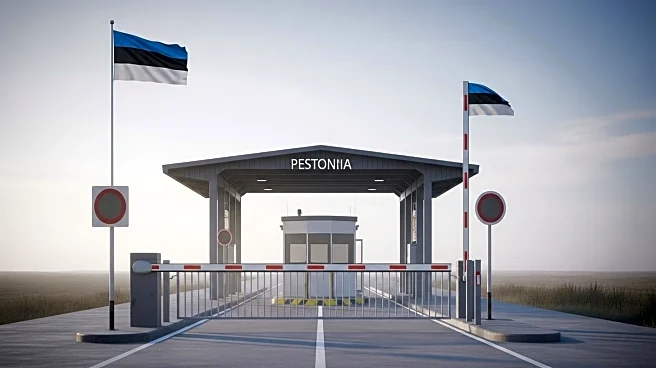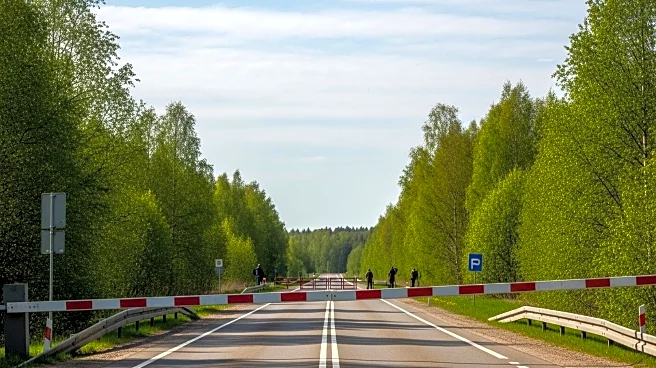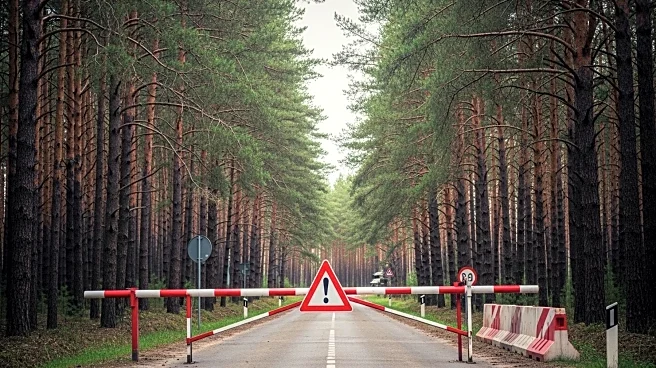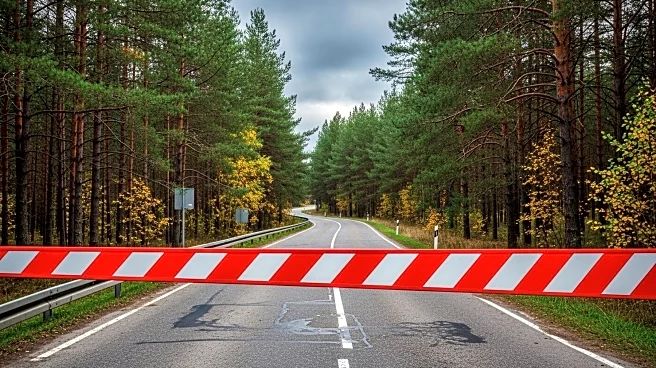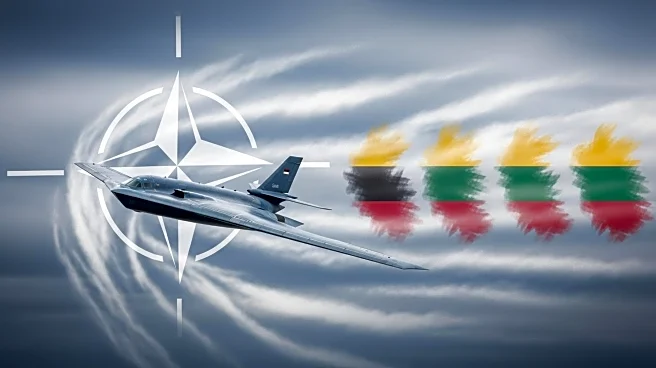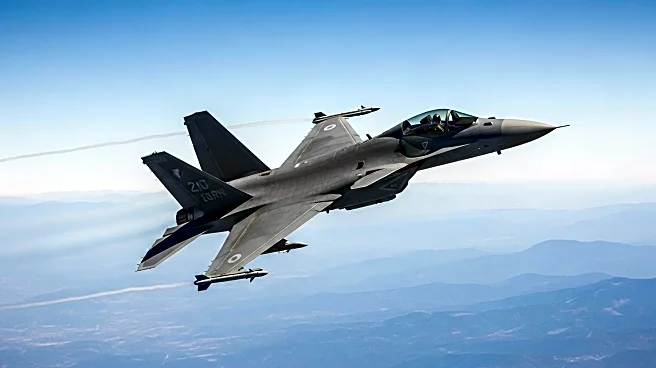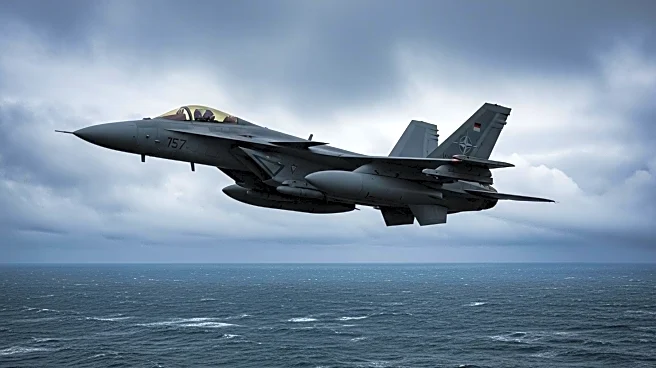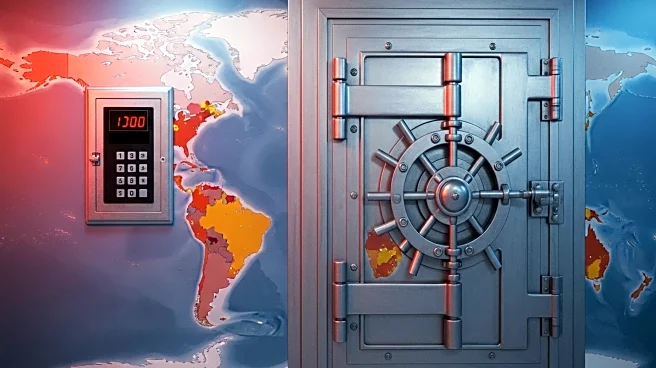What's Happening?
Estonia has closed access to a road that briefly passes through Russian territory, citing the presence of Russian troops. Estonian officials reported spotting seven armed Russian servicemen on the Russian side of the road, leading to a temporary halt in traffic to prevent potential incidents. The road closure follows recent violations of Estonian airspace by Russian fighter jets and the crossing of Russian drones into Poland, prompting both countries to invoke NATO's Article 4 for consultations. Despite these developments, Estonian Foreign Minister Margus Tsahkna stated that the situation on the border is under control and reports of heightened tensions are exaggerated.
Why It's Important?
The closure of the border road highlights ongoing concerns among NATO's eastern members about Russian military activities. Estonia's actions reflect the broader apprehension within the alliance regarding Russia's assertiveness in the region. The invocation of NATO's Article 4 by Estonia and Poland underscores the seriousness with which these nations view potential threats to their territorial integrity. The situation also illustrates the delicate balance NATO members must maintain in responding to Russian provocations while avoiding escalation. The construction of a new route to bypass the Russian territory further indicates Estonia's long-term strategy to mitigate risks associated with the current road.
What's Next?
Estonian media reports that the road will remain closed until Tuesday, with plans for a new route to open in 2026. The ongoing developments may lead to further diplomatic discussions within NATO regarding security measures and responses to Russian activities. Estonia's actions could prompt other NATO members to reassess their border security protocols and collaborative defense strategies. The situation may also influence future NATO policy decisions concerning the eastern flank and relations with Russia.
Beyond the Headlines
The closure of the road and the construction of a new route reflect broader geopolitical shifts in Eastern Europe. Estonia's proactive measures indicate a growing emphasis on national security and infrastructure resilience in response to Russian military maneuvers. The situation also raises questions about the historical and political complexities of border regions in Eastern Europe, where territorial anomalies can lead to diplomatic challenges. Estonia's approach may serve as a model for other countries facing similar geopolitical pressures.
